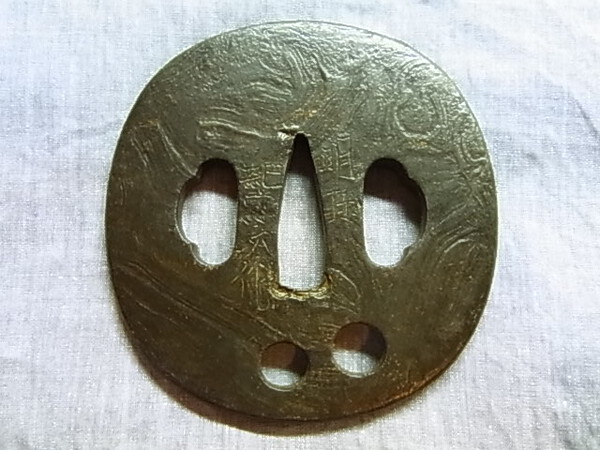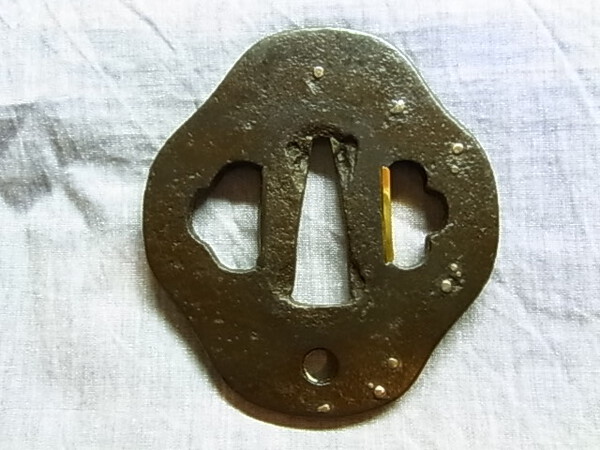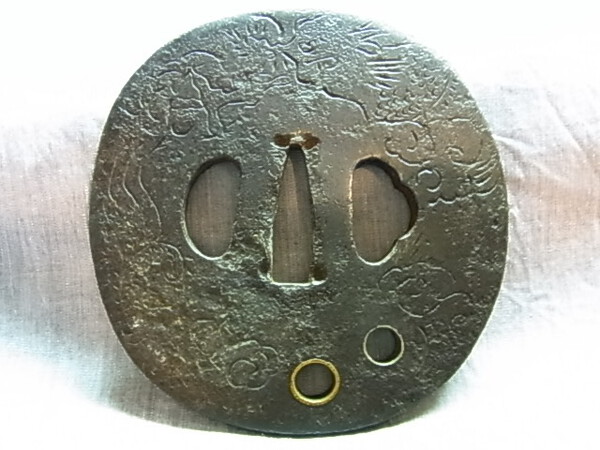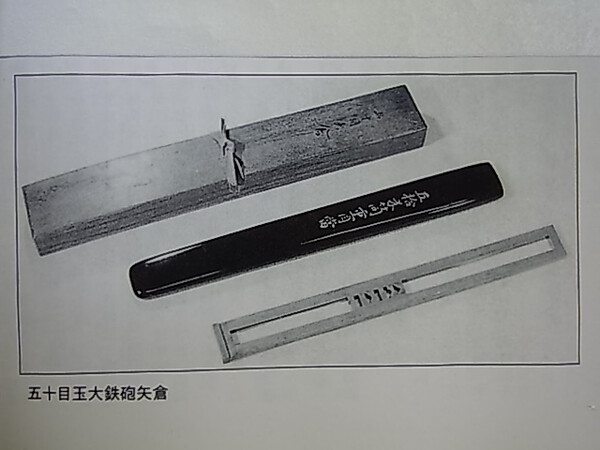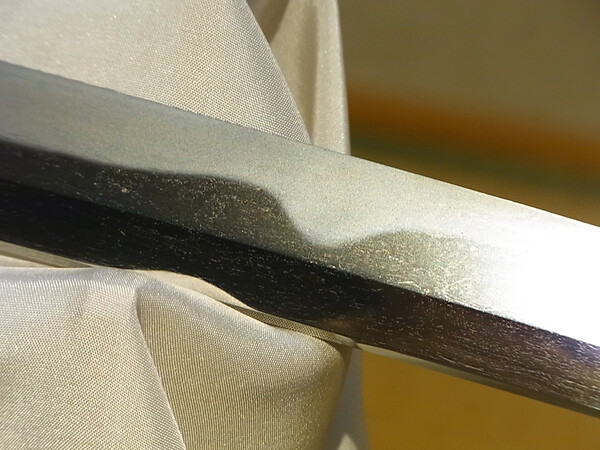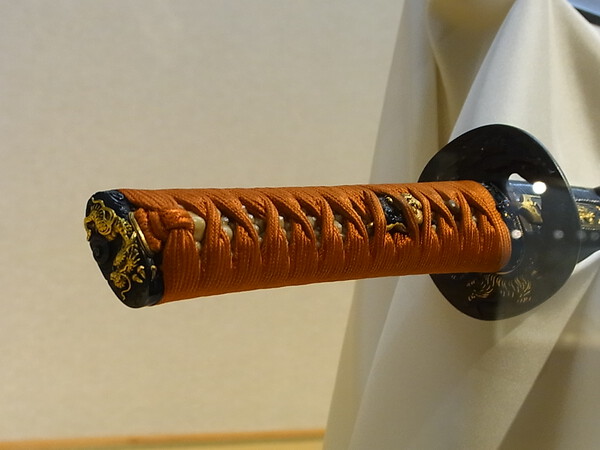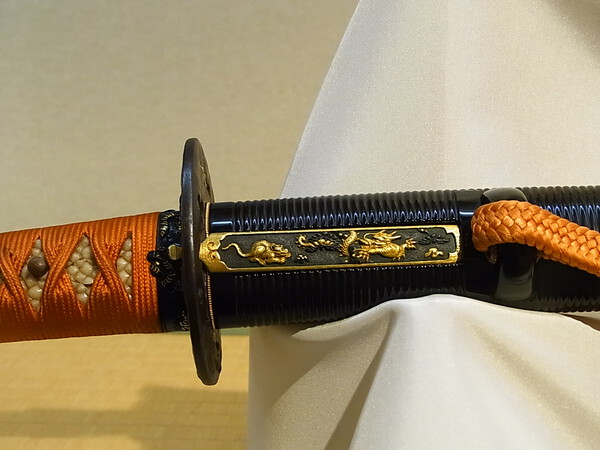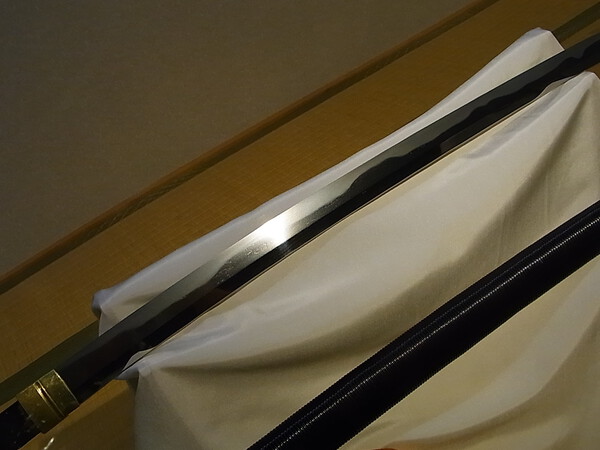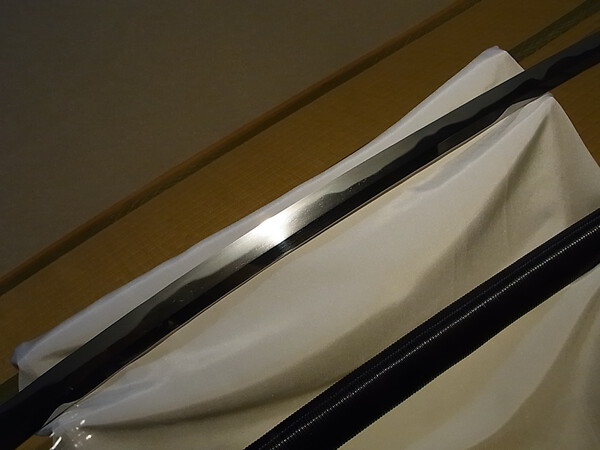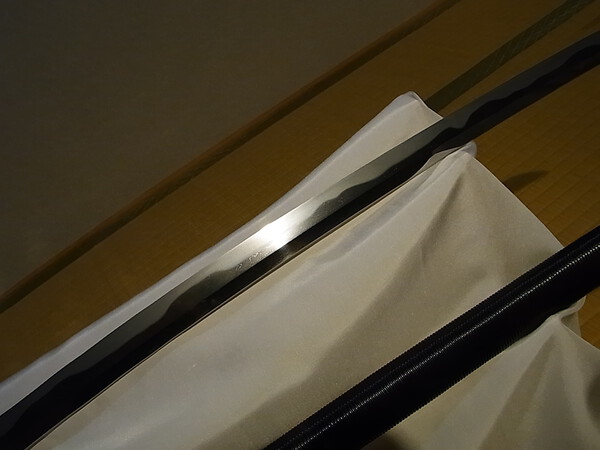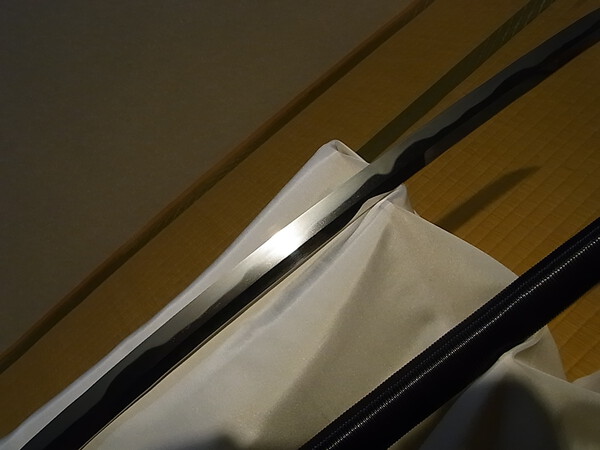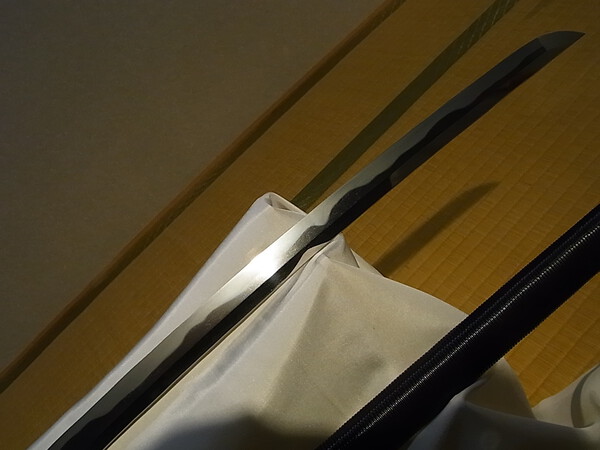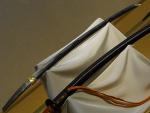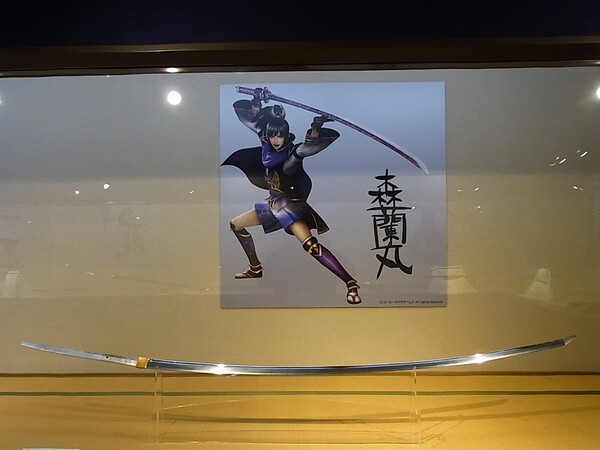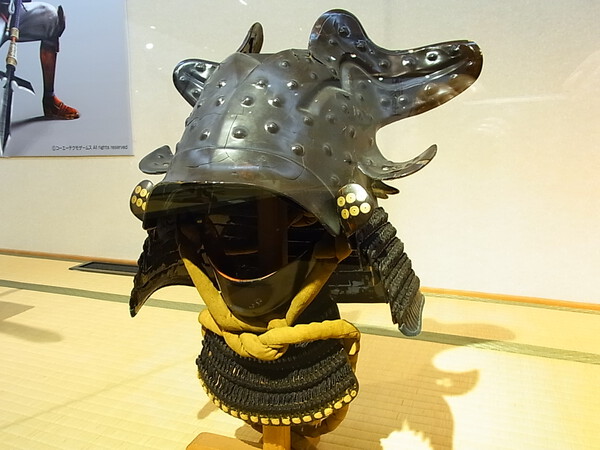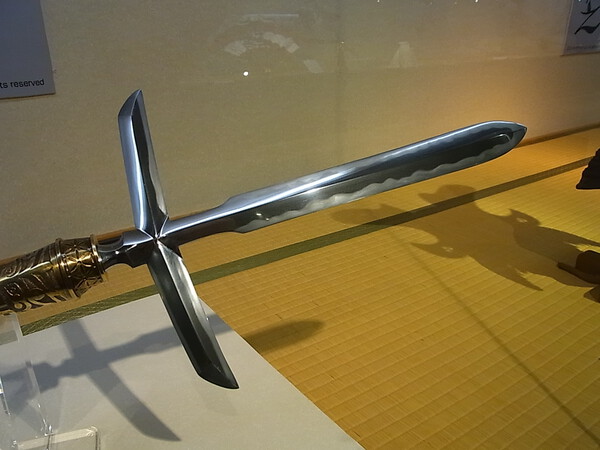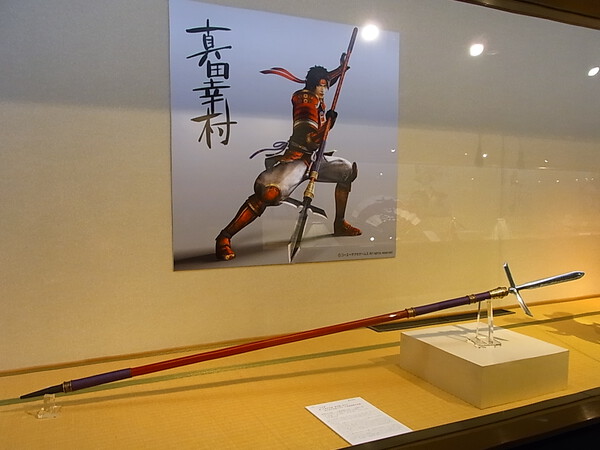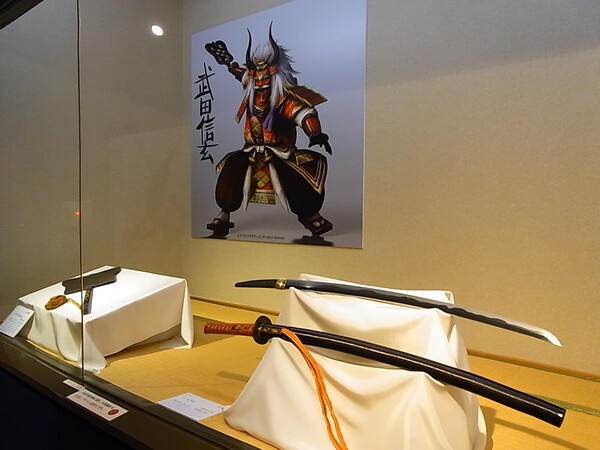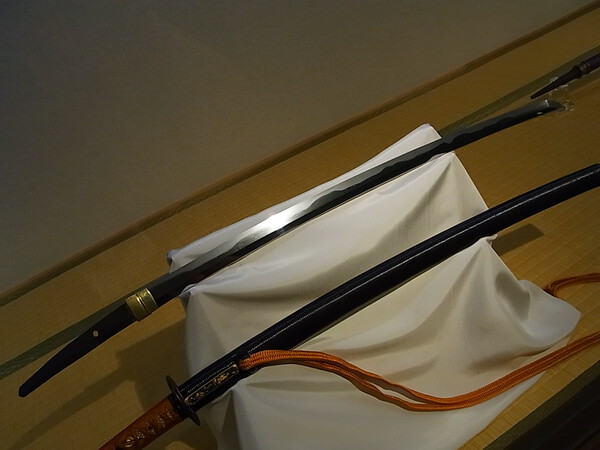-
Posts
13,873 -
Joined
-
Last visited
-
Days Won
250
Content Type
Profiles
Forums
Events
Store
Downloads
Gallery
Everything posted by Bugyotsuji
-
Lots of examples, and far better than I had hoped. Some patterns are emerging in my mind. One thing that stands out for me is the placement of these holes. Although they could be put almost anywhere, artistic consideration seems to be of the greatest importance, perhaps more so than functionality. (This again is something that people say about Netsuke, ie the placement of the holes is vital and can make or break a composition, although functionality will always be vital in Netsuke.) Common also is a disparity in size. Sometimes they are called 'Sun & Moon' 日月 Jitsu-Getsu (101 ways to read these characters in conjunction!). Two of the Udenuki holes above are ringed in gold/brass and silver in order to emphasize that aspect. There was certainly a period in Netsuke when one hole was markedly larger than the other. Please forgive the constant reference to Netsuke, but I have a pet theory that spare Tsuba sometimes functioned in the Muromachi and Sengoku period as Netsuke for carrying other things from the obi, weighted against them. Spoils of war? Conversely it could be that Netsuke may have taken their inspiration and birth, at least partly through such usage of Tsuba. Could these holes have had a primary active function, as udenuki, then such a secondary passive function, whilst keeping it all the while artistically pleasing? (Now we wait for the heavens to open...)
-
Oh, wow, thanks for posting that. Now we are getting into Netsuke/Tsuba crossover territory with the two 'Himotoshi/Udenuki-no-kan' holes being 'natural'.
-
Oh, all right then, I'll put them up first. The only one I can roughly date is the first, Wakizashi-sized, 7.5 cm high, mid-Edo, signed 明珍 紀守次 Myochin Ki(?) Moritsugu, also named 忠則 Tadanori, one other example being dated 寛保 3, = 1743. The second is smaller, at 7.2 cm high, and the third is much larger at 8.9 cm. (Apologies for unflattering shots taken leaning up against the pc.)
-
Something that has just come up again with PeterD's recent thread, is the two holes sometimes found (often but not always) near the edge of some tsuba. I have been interested in these holes for some years, but the Geocities link once posted on this site has disappeard. Guido posted a useful illustration of how leather bindings through them would have worked. download/file.php?id=6749 Would members like to post examples of their tsuba, leading to more comprehensive discussion of their shape(s), purpose(s) and characteristics? Are they found only or mainly on older tsuba? Were they connected with fighting on horseback, where dropping a sword would be fairly fatal? Is there a strong connection with Satsuma, but are the Satsuma holes smaller than examples from elsewhere, and for a different purpose? If this thread looks like taking on life, I will add a couple of examples to keep the theoretical pot boiling.
-
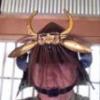
Jumonji yari, Fukuoka Moritsugu, Enpo Shinto
Bugyotsuji replied to Bugyotsuji's topic in General Nihonto Related Discussion
For all the haters, some good news! No-one will risk doing this work. The end result may well take the historical value out of a genuine Saya, both internally and externally, and it may well not be a perfect job. If the dealer will take this red and gold Jumonji Saya back, then we can go back to the drawing board. An interesting suggestion the other day was that I should try asking the Saya lacquerer here to lacquer the Shirasaya suitably and in so doing kill two birds with one stone. -

THE TANEGASHIMA BREACH PLUG ( BISEN )
Bugyotsuji replied to watsonmil's topic in Tanegashima / Teppo / Hinawajū
My first pistol was a real beauty and admired by all and sundry. It contained a terrible secret, though. Someone (no names) had applied too much heat, freezing and force, and the Bisen had broken in two. It then needed boring out and a new screw cut. It made me feel like an imposter, hiding a brand new Bizen with western-type screw in it. Since then I have been super aware of the fallibility of the Bisen itself. Incidentally someone told me the other day that the first guns made in Tanegashima probably had solid, sealed breech plugs. Oh, and Chris, the other pistol in question I mentioned earlier with the rusted stuck Bisen has silver inlay on the barrel right to the edge, so I am a little nervous of too much heating. -

THE TANEGASHIMA BREACH PLUG ( BISEN )
Bugyotsuji replied to watsonmil's topic in Tanegashima / Teppo / Hinawajū
Brian, one of mine has not been opened yet. I know exactly how you feel. I have given up several times, but then the old urge awakes to try again. One day, for sure... -
Wow, nice find. Thanks. Hours of fun to be had in there!
-

GLASS IN THE HISTORY OF EARLY JAPAN
Bugyotsuji replied to watsonmil's topic in General Nihonto Related Discussion
Nice lamp, Ron, and full of interesting nuggets. Have to agree with Brian. This is an area that I had some inklings about and indeed I have a few Japanese glass pieces, but the whole story had never fitted together quite like that. It is amusing to note that the Japanese have formed two different words from the English word glass, ie Gurasu グラス for drinking glasses, and Garasu ガラス for glass in general, such as window pane glass. You have to be able to remember to say Gu, or Ga, depending on the context or you could be laughed at. Well, no, people are far too polite. Now it is too late to ask him for further information, because he died a couple of years ago, but a good friend, a Professor Seno at our university who was also Chief Monk at his temple in Fukuyama, told me he had the biggest and best collection of Japanese glass, (usually called "Bidoro", from the Portuguese Vidro) in Japan. He had many Garasu-e ガラス絵, too, pictures painted on glass, although he assured me the world was full of fakes nowadays. Most of the time his collection was out on the road, ie on loan to some prestigious institution or other he said. I went to see a display of Bidoro at the Kobe Museum some years ago and he proudly pointed out which bits in the catalog/ue were his. Once when I mentioned an interest in Nihonto he drew back and said that was one thing he refused to collect. Having been in charge of prisoners-of-war in Hakodate, Hokkaido during the war, he felt as a Buddhist that he could not be involved with an object designed to take life. Thanks for the prompting, Ron. I have other friends involved in glass in this area, and you have brought this into focus. One is the curator of a museum and he has been involved in collecting ancient glass from the middle east, and another has amost single-handedly rediscovered how to make core glass, as opposed to the later Roman invention of blown glass. This artisan was called in to recreate the missing hanging beads on the square Buddhist canopies in Nara. I shall gather together some bits and pieces such as an Edo Period glass Netsuke and Tombo-dama beads into a Furoshiki and ask them for their thoughts at an appropriate moment. There is a pair of Edo Period firemen's glass goggles on display at the Hayashibara Art Museum (opened yesterday) which fascinated me. I know there are collectors out there of Edo reading glasses, but I have seen very few. Someone offered me a pair the other day, but with no glass where the lenses should be... -
Nothing in black brushwork other than what John said, and the date of the certificate. These certificates generally state the absolute bare minimum, and even then it's like drawing blood from a stone.
-
Request for caption translation, which I will have to do anyway, so here goes. Slightly short form. If anyone has a better translation, please do not hesitate to offer suggestions! 19 Private Ownership ____________________ Katana Mei: Muramasa Said to have been owned by Sanada Yukimura Blade length: 68.8 cm. Sori (curve depth) 1.7 cm. Late Muromachi (16th C) ____________________________________________________________________________________ Popularly known as "Yo-to Muramasa" (The Siren Blade Muramasa). Famous for causing grief to the Tokugawa. Likes blood, causes the owner to become hot tempered (Tanryo), or it brings evil/a curse upon its owners, and the stories grow in the telling. From the start they had a good reputation for the sharpness of their cut. The Koshirae and Kodogu (tsuba, menuki, fuchi, kashira, kozuka) all dragons and tigers. The Saya is Sendan Kizami (1,000 cuts/notches)
-

Woodblock print with matchlocks!
Bugyotsuji replied to Viper6924's topic in Tanegashima / Teppo / Hinawajū
Borrowed from Sawada San's book. It doesn't indicate whether these were made of brass, or wood, but perhaps wood would be less likely to shine in the sun and give away your position, (apart from the smoke of your match!). It might also explain why they have not survived. In woodblock prints however, they are sometimes painted the same colour/color gold as the brass lock, in contrast the stock/butt, or the white, black or blue for the barrel. So... brass? (See illustrations above and on previous page.) Caption: 50 Monme O-deppo Yagura -
Spent a good half hour with the Director of the museum standing in front of the Muramasa and discussing it, while trying to look professional with the camera. Some of the little comments he dropped were fascinating. After I had tried in vain to find any evidence of a boshi to shoot, he stepped back and said, "Well, this Muramasa was not designed for sword appreciation. It is a practical sword, for doing a job." (Jitsuyou-teki, 実用的). When I mentioned Masamune in contrast, he said that in his opinion Masamune swords were designed to be appreciated as art. Brian, I got about 20 extra shots for you, but not wanting to overload the forum I've chosen a few samples. Say if you want more of anything. The Tsuka is bound in a sort of light pink/orange saffron colour; I wish I knew the correct word. The Fuchi/kashira/kozuka/kogai feature a common theme of tigers and dragons. They have not yet sent me the cards for translation, but this one is in Japanese, so I have included a shot of it. *Translation added some posts below.
-
Spent five hours at the museum today helping them set up the display, much of it suits of armour and big guns that we had been asked to bring along. I asked very politely what their general policy on photographs was, but I must have got the wrong curator on the wrong day. There was a distinct sharpness in his voice as he said it was absolutely forbidden, and I got the message in his eye that I should not try to take any sneak footage. (Henk-Jan, I visited the tombstone of Kusunoki Masashige on Sunday.)
-
Hello Brian, I will make a point of getting some more shots of the Nakago and two or three along the blade, although not so easy through glass at that distance with the camera I am using. I have been setting it on macro, and using the zoom, but the lens is not happy when I put it against the glass to steady it. After waiting till all the visitors had left on Saturday I was able to get the place pretty much to myself. Should be back there as a guide on Wednesday. (Thinks, take a tripod...) This O-dachi for Mori Ranmaru (色小姓 Irokosho bumboy? to Oda Nobunaga, and died with him at Hon-no-Ji) is the longest sword that has been created in Japan by a living swordsmith, Fujiyasu Shohei, at 160.8 cm, sori 8.2 cm. This is a jingasa of the Moh-ri family of Yamaguchi, handed down within the family, now on loan from the Iwakuni Museum. See the Omodaka (arrowhead, water plantain) and Ichi Monji Mittsu-boshi (Figure One and three stars) Kamon.
-

Woodblock print with matchlocks!
Bugyotsuji replied to Viper6924's topic in Tanegashima / Teppo / Hinawajū
Some of the Awa guns still have a folding sight there, although most have lost them. There were several words in Japanese for these ladder sights, probably different for each school of gunnery, and none likely to bring a look of recognition to any modern Japanese face. Sawada San still has one with its original box. The near sight was called 元目当て "Moto-me-ate" in general and the far one, 先目当 "Saki-me-ate". The removable, folding ladder sight for the Moto-me-ate can be described for ease of understanding as 矢倉目当 "Yagura Me-ate", or "Tower sight". -
Gabriel, especially for you! A sword perhaps? :lol: Sanada Yukimura/Nobuyuki display shows a Jumonji Yari, both blade and furnishings created especially for this exhibit. Blade by four Osafune smith collaboration. Many smiths and artisans cooperated to create something to mark the 400th anniversary of Sanada Yukimura's death. He is also associated with a Muramasa sword, here in a black ("Sen dan kizami") 1,000 step-cut uchigatana lacquer saya. Late Muromachi. Blade length 68.6 cm, Sori curvature, 1.7 cm. Said to have been among articles belonging to Sanada Yukimura. Private owner. See following post for: Black odoshi 蝶形 Chonari (Butterfly shape) Kabuto helmet. Edo Period. Passed down in Sanada family, on temporary loan from Iwakuni Museum.
-
Commemorating the 50th Anniverary of the Museum's founding they have built up a display featuring a recently discovered document that sheds new light on the Hon-no-Ji incident (when Oda Nobunaga was done in by Akechi Mitsuhide). 武士のダンデイズム special exhibit runs from 19 July (this Saturday) until 15 September. Swords, fittings, armor/armour, guns, etc., ultimate fashion accessories decorating the lives of the Bushi. Includes seven sets of armor/armour belonging to the Ikeda Lords. (Helping with the set-up tomorrow. We will be bringing in some of the armour sets and big guns. Not sure if I will be allowed to photograph any of the stuff but will attempt to get sneak shots if they give the green light.)
-
Another exhibition coming up; tomorrow I have been asked (at this ripe old age) to be a general dog's body helping to lug the stuff there and set up that display. For this reason my attention will be switching away from this present thread, unless someone genuinely would like to see a photo of any of the "interesting" stuff. (Flash photography was not allowed) A Muramasa, anyone? A Kawari Kabuto helmet?
-

Woodblock print with matchlocks!
Bugyotsuji replied to Viper6924's topic in Tanegashima / Teppo / Hinawajū
Gosh, now that is something special. Well done on finding that Bazza. It combines two worlds that I find myself caught up in. (Shooting owls and shooting cranes, yes, you guessed it!) The meanings of this form of shorthand are not immediately clear so I will pass until Morita San or Moriyama San appears. In the meantime I will show it to some friends for ideas. If ever you need to sell it, please put me on the list!


